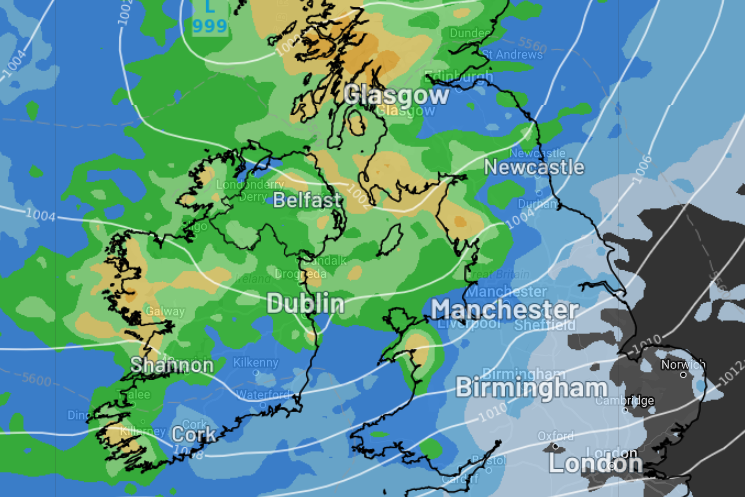The quaint gentleman’s game of cricket has evolved enormously in the past few decades, with all manner of innovations. From helmets, colourful kits, white balls, pink balls, and extravagant ‘ramp’ and reverse sweep shots to game formats played in fast forward, tree trunks as bats, flashing bails and umpires wired to a third judge in the bleachers calling on forensic video evidence.
Yet at the heart of it, therein lies the same joust between a batter and a bowler conducted over 22 yards of achingly manicured turf, activated by a 160-gram leather-encased orb, three stumps at each end, nine fielders and a wicketkeeper.
Perhaps one of the most critical elements of cricket though is the geospatial component. It’s always been there; the strategic placement of fielders, the location where the bowler lands the ball on the pitch and its trajectory thereafter, all combining to decide the fate of each delivery.
However, the march of 21st Century technology has produced a level of data and visualisation that has changed the way all parties experience the game. Of course, the power of applying geospatial data to enhance performance analysis and fan engagement in addition to critical game-changing decisions is evident in many sports now. Notwithstanding cricket, a cerebral and strategic game (albeit with archaic tendencies), has arguably led the charge.
Hawk-Eye
Invented in the UK by Dr Paul Hawkins in 2001, the conveniently named Hawk-Eye was the pioneering ball-tracking technology, subsequently adapted for tennis, soccer and other sports.
Cricket’s primary purpose was assessing contentious leg before wicket (LBW) decisions via a determination of the ball’s predictive path with respect to the stumps. Employing 6 cameras – three at each end of the ground – Hawk-Eye records the visuals of every delivery bowled. A computer linked to the cameras applies an algorithm to the data obtained. This is triangulated to within half a second to create the ball’s 3D path which predicts the trajectory after it hits the batsman’s pads. Several variables come into play;
- The speed of the ball leaving the bowler’s hand
- The swing of the ball from the bowler’s hand to its ‘pitch’, or bounce
- How much the ball has bounced
- How much the ball spun sideways off the wicket
Hawk-Eye Innovations, owned by Sony since 2011, is still pushing the boundaries of technology and GIS in sport. Amazing new developments include creating a digital twin of actual football, baseball or basketball games for analysis purposes and a virtual Etihad Stadium for Manchester City fans (or at least their avatars) all over the world to interact and participate in game related activities.
Virtual Eye
Hawk-Eye’s competitor in cricket’s GIS market, Virtual Eye, was initially focused on impressing broadcasters and their viewers. Think scoring wagon wheels, pitch maps, seam/spin deviations, fireworks (shot trajectories), field placement, six distances, 3D flyovers into cities and stadia, and so on.
“At Virtual Eye our approach has always been that technology should be used to help viewers of a sport understand how skilled the proponents are and that it should only attempt to deliver things that television cameras can’t,” CEO Ian Taylor was quoted as saying. “To help explain the game of chess that is being played between the bowler, his captain and the batsman.”
Attempts to convey geospatial aspects of cricket hark back to the channel 9 commentary days of Tony Greig and Keith Stackpole. Compared to what’s available now though, the old field placement graphics are like comparing Playstation to Pong. Never would they have envisioned what was to come, nor the implications.
Howzat?
Once television gained access to ball-tracking and other visual insights the poor umpires were on a hiding to nothing. Indeed, who’d be an umpire making the toughest of split-second calls in front of an international audience of millions, only to be made to look a fool, or worse?
Whilst on-field umpires had been referring runouts ‘upstairs’ since 1992, ball-tracking technology for LBW’s wasn’t originally part of the Decision Review System (DRS) established in 2008. However, when the ICC were compelled to knock on Virtual Eye’s door in 2009, the Dunedin-based software technology firm felt obligated to invest in a more stringent standard of accuracy. One million dollars later and the Virtual Eye Cricket System was first introduced for decision-making purposes at Dunedin’s University Oval (just down the road from where Virtual Eye was founded) during a Test match between New Zealand and Pakistan that November.
Virtual Eye’s cameras track the centre of the ball in every 160 frame-per-second capture, from the release point of the bowler to the impact point on the batsmen. About the only time the system encounters issues now is the rare occasion when a stadium’s infrastructure inhibits the correct positioning of a camera.
Despite a supposed 99% accuracy rate (on ball-tracking at least), DRS – which also includes ‘Snickometer’ and ‘Hot Spot’ – still attracts dubious notable experts. With outliers such as the pitch and ball condition at play, occasionally players are miffed by the result. As a nation, India has repeatedly rejected using it in home series. But surely it’s preferable to the many LBW ‘howlers’ that would, in its absence, unduly influence games? Indeed, the most commonly held gripes aren’t so much about the technology itself but the parameters of how and when it is deployed e.g. an obviously wrong call can still stand simply because a team has used up all its challenges.
Interestingly, ball-tracker results over time have led to batters and bowlers adjusting their tactics. Fast bowlers no longer win as many LBW’s due to umpires previously underestimating the bounce, meanwhile batters are no longer able to rely on plonking their front leg forward with impunity against spinners.
Raising Standards
Former Australian cricket coach John Buchanan, who commenced his role in 1999, was said to be a pioneer in utilising ball-by-ball geospatial data in various ways to analyse his and the opposition players’ strengths and weaknesses. Buchanan was not a traditional style of cricket coach, yet one absolutely suited for the time. With a host of champion players at his disposal, supplemented by a data-fuelled tactical advantage, it’s no wonder Australia barely lost a game or series in any format over the ensuing eight years.
Now most international teams use geospatial data to compile strategies of where a batsman or bowler might be weak, how to play on certain pitches at different venues and what has been the most successful strategy in recent times – or as far back as 2006. Analysis tools that drill down further into the current match, series or team show different aspects of the game being played.
Decision Time
Geospatial animation and graphics afford commentators, players, umpires and fans the opportunity to view cricket through a different lens. Its seamless integration into cricket coverage provides in-depth analysis in real-time that can be easily understood by even the most casual fan.
Yet, despite all this, traditionalists (and there’s no shortage of those loitering in long rooms) still harbour reservations. Does all this new fandangled technology really improve the spectacle, or has some of the romance, excitement and spontaneity been removed? Momentous wickets are celebrated, only to be challenged, then overturned or re-celebrated. Officials and players are almost on trial, their integrity sometimes called into question. Balancing the interests of the sport’s many stakeholders is a tricky business. Of course, one can’t put the genie back in the bottle now. Certainly not when the global cricket betting market stands at $85 billion and the fate of nations, and individual careers, can ride on the width of a thumbnail!
And one final poser, particularly relevant to the 2023 Ashes series in England – has a geospatial image ever caused as much angst as this one in cricket?





